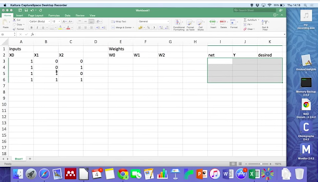Suraj Ajit
Assessment in HE Conference, Birmingham, UK, 23-24 June 2015
Abstract
Assessment is a process of measuring the extent to which students have fulfilled the expected learning outcomes for a course/module. There are many assessment strategies adopted by universities across the world for computer programming. They include written examination (closed book, open book), lab examination, multiple-choice/short-answer exams (paper or computer based), course work (or assignments) and oral examination. Again, the format, level and types of questions asked vary across universities. Assessment can take many forms, and it can be argued that the greater the diversity in the methods of assessment, the fairer, assessment is to students (Race 2007). The most effective form of assessment is one that appropriately examines the learning outcomes of the module. Assessment methods are also known to play an important role in how students learn (Brown 2004). The traditional assessment approach, in which one single written examination counts towards a student's total score, no longer meets new demands of programming language education (Wang, Li et al. 2012). Because computer programming is problem-solving oriented and very practical, the assessment of programming learning performance is challenging. The conventional assessment is not easy to be adapted to various new developments in computer programming education. This paper reports on the experience of adopting several assessment methods across programming modules for computing courses at the University of Northampton. In order to evaluate the assessment strategies from the students' perspective, a survey questionnaire was developed and distributed among a selected sample of final year computing course students. The paper discusses the results obtained from this survey. In particular, the paper compares the obtained results with that of other research performed in the same discipline as well as other disciplines. The key research questions the paper attempts to address are as follows:
1. What is the most effective assessment method for programming modules from a students' point of view?
2. How do student perceptions of computing (programming) assessments compare with that of other disciplines? Is programming any different?
3. How do the student performances relate to their perceptions of the assessment methods?
1. What is the most effective assessment method for programming modules from a students' point of view?
2. How do student perceptions of computing (programming) assessments compare with that of other disciplines? Is programming any different?
3. How do the student performances relate to their perceptions of the assessment methods?
Citation:
Ajit, S. (2015) Student perceptions of different assessment modes in computer programming courses. Other presented to:Assessment in HE Conference, Birmingham, UK, 24-25 June 2015.All views and opinions are the author's and do not necessarily reflected those of any organisation they are associated with






